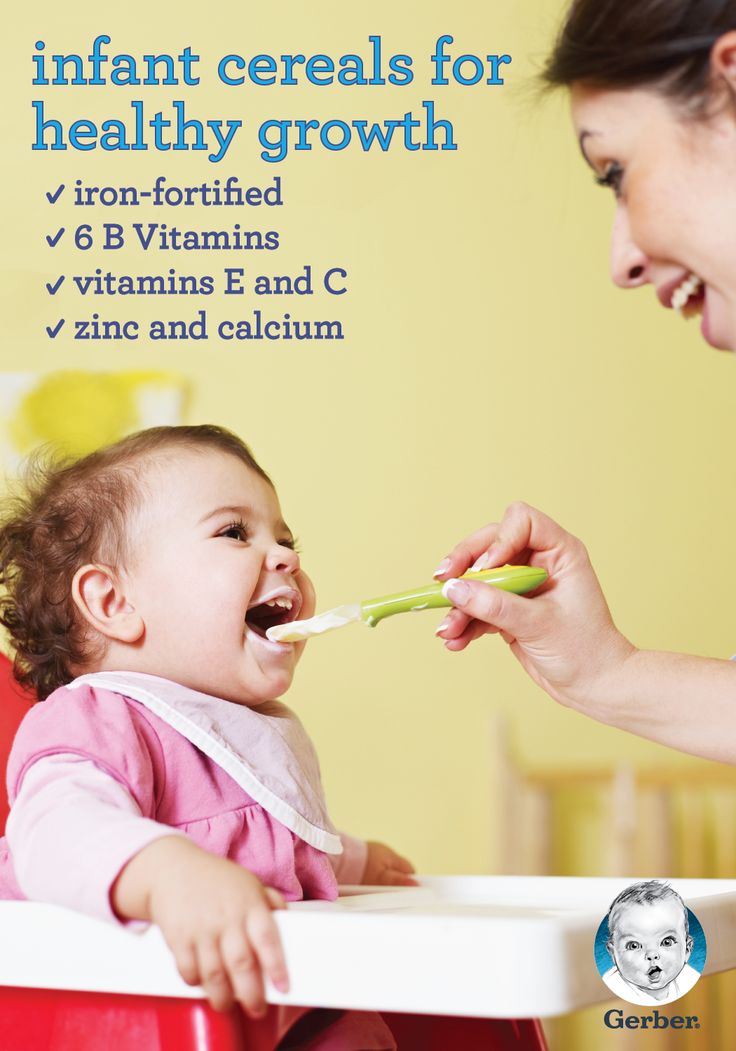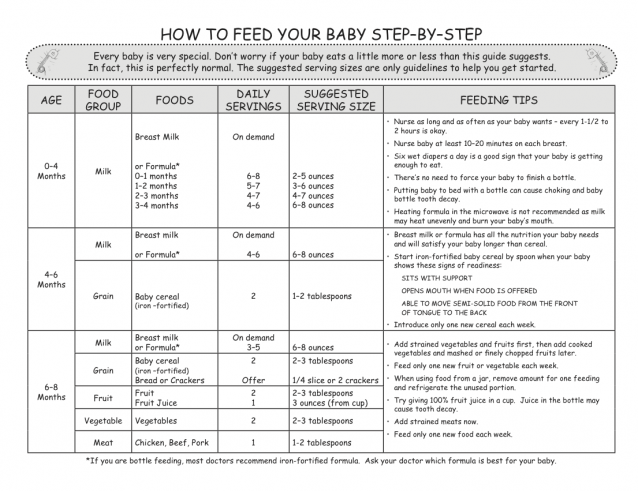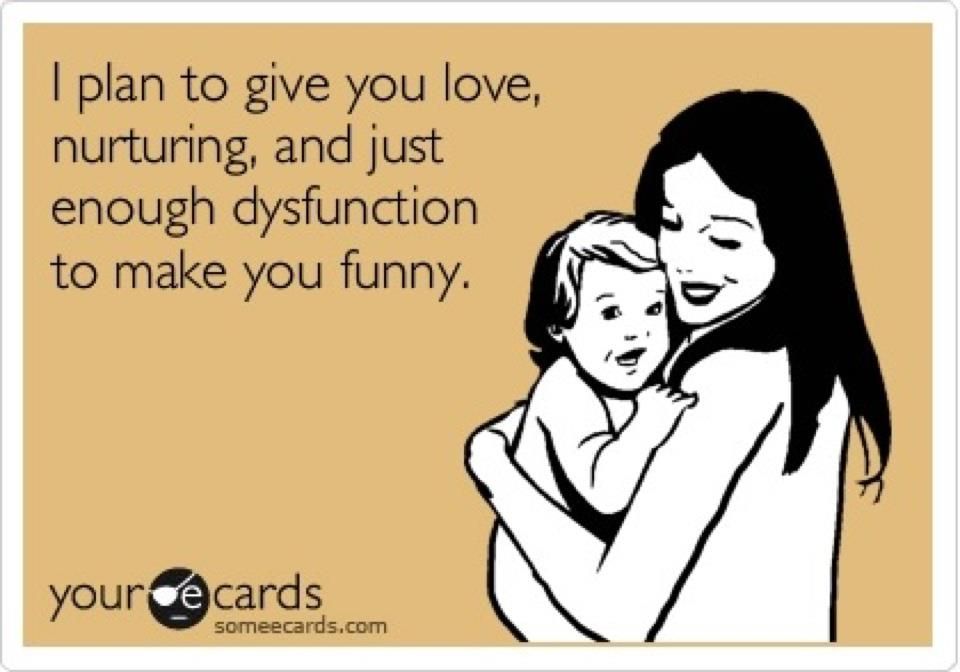Baby not feeding long enough
Signs baby isn’t getting enough breastmilk
Every parent wants to do everything they can to help their child grow healthy and strong. And breastfeeding is one of the best things you can do for your baby. But it doesn’t always go smoothly, especially when you’re just starting out. So, you may wonder at some point: Is my baby getting enough breastmilk? How can I tell?
Try not to worry. We have a team of breastfeeding and lactation experts to help you and your baby work through breastfeeding challenges.
Read on to learn how to tell if baby is getting enough breastmilk, some suggestions to help make sure baby gets enough to eat, and when you should make an appointment with your baby’s doctor or a lactation consultant.
How do I know if my newborn is eating enough?
If you’re exclusively feeding your baby from the breast, rather than pumping to bottle feed, it’s hard to tell exactly how much your baby is eating. Here are six signs your baby is getting enough breastmilk.
1. Baby is feeding regularly
Babies breastfeed frequently and often in clusters. Frequent, effective feedings help your baby grow, and help ensure you have enough breastmilk for the next feeding.
During the first two months, expect your baby to nurse 10 to 12 times in a 24-hour period. In the beginning, each breastfeeding session will likely take between 20 to 45 minutes. If you are feeding your baby less than eight times a day, or if the sessions are very short or very long, you should talk to your baby’s doctor.
As your baby grows comfortable with nursing and gets a little older, they’ll be able to get what they need in a shorter amount of time – and with fewer nursing sessions.
2. Baby is swallowing during feeding
When baby first latches onto your breast, they will suck rapidly to get the milk flowing. But once things are going, the sucking will become slower and deeper as they pull the milk into their mouth and swallow.
Watch baby’s jaw for movement and listen for swallowing sounds. If you see baby’s jaw move or hear them swallowing, they’re getting at least some breastmilk.
If you see baby’s jaw move or hear them swallowing, they’re getting at least some breastmilk.
If baby isn’t getting enough milk, their sucking may not progress to that slower, rhythmic pulling. Baby may also fall asleep at the breast, take long breaks while breastfeeding or give up within a couple minutes.
3. Baby is content and happy
If your baby seems satisfied after breastfeeding, they’re likely getting enough milk. But if they always want to nurse, it may be a sign that baby is still hungry after breastfeeding – especially if they appear sluggish or they’re losing weight.
4. Your breasts feel softer and not as full after feeding
Your breasts should feel softer at the end of a feeding. Emptying as much milk from your breasts as possible will help create more supply for the next feeding.
If you’re worried about your milk supply or that you’re not eating the right things for breastfeeding, here’s some good news: Nearly all moms produce enough breastmilk to feed baby without any major changes to their diet.
Breastfeeding can be uncomfortable at times, but it shouldn’t be painful. Pain in the breasts or nipples can be cause for concern. So if you are experiencing pain, talk to your baby’s doctor or a lactation consultant about it.
5. Baby is gaining weight as expected
It’s normal for a newborn’s weight to fluctuate during the first few days of their life. Typically, by day 10, a baby’s weight has rebounded to their birth weight. Until 6 months of age, babies usually gain between 5 and 8 ounces a week. At five months, your baby’s weight should be double what it was at birth.
6. You’re changing a lot of diapers each day
Diaper duty starts small but, before you know it, those diapers pile up.
How many dirty diapers should a newborn have per day? And what about poopy diapers? One thing that’s helpful to remember is that during their first week, your baby will have about the same number of wet and poopy diapers as the days of their life. After that, parents can expect to change eight to 10 diapers each day.
- Day 1: At least one wet and one poop
- Day 2: At least two wets and two poops
- Day 3: At least three wets and three poops
- Day 4: At least four wets and four poops (from this point, poops should be yellowish in color)
- Day 5 and beyond: At least 5-6 wets and 3-4 poops
[Click on the image below to enlarge and view it in a new window]
That’s a lot of dirty diapers! To keep baby’s skin healthy, change them as soon you can and make sure to get into all the folds of baby’s skin when cleaning out the poop.
Also pay attention to your little one’s bottom. If you notice redness, bumps or signs of severe diaper rash, talk to your baby’s doctor about what you can do.
How to help your baby feed more effectively
It’s often said that timing is everything. This is certainly true when it comes to breastfeeding sessions, as well as when to introduce bottle feeding and pacifiers.
Watch for cues that your baby is hungry
You can help make sure your baby is eating enough by looking for opportunities to breastfeed, rather than waiting until baby is upset and crying.
If your baby is hungry, they’ll let you know in a variety of ways ranging from subtle suggestions to outright demands. We talk about these in terms of early cues, mid cues and late cues.
Early hunger cues can include stirring from sleep, opening their mouth or turning their head toward your breast when you stroke the corner of their mouth.
If you don’t respond to these early cues, baby has other ways to let you know – which brings us to mid cues. Some common mid cues are stretching, becoming more physically active and bringing their hand to their mouth.
If these mid-cues don’t result in a breastfeeding session, baby will take drastic measures to let you know that they are really, really hungry. They’ll cry and howl. They’ll flail their arms and legs around. They’ll turn red from all the exertion. These are late feeding cues and at this point, baby is often too upset to eat. So, you’ll need to calm them before you can feed them.
By feeding your baby when you see an early cue, you can help keep feedings calm and effective. It’s so much easier for baby to focus on getting enough to eat if they aren’t using all their energy expressing the big emotions they’re feeling.
It’s so much easier for baby to focus on getting enough to eat if they aren’t using all their energy expressing the big emotions they’re feeling.
This poster shows what baby’s feeding cues may look like.
[Click on the image below to enlarge and view it in a new window]
Only introduce a bottle or pacifier when the time is right
Bottles and pacifiers encourage a different type of sucking than breastfeeding. So you’ll want to wait until your little one is fully comfortable with breastfeeding before introducing either.
Most babies really latch on to breastfeeding by about two to four weeks after their birth. But for some, especially those who were born early, it can be longer.
You also don’t want to wait too long for baby’s first bottle. Introducing a bottle too late can be one reason why babies refuse a bottle. A lactation consultant or your child’s doctor can help you figure out the best way to start the breast to bottle transition.
Pacifiers are great for soothing and a recommendation for safe sleep for babies, but like with the bottle, hold off until baby has gotten really good at breastfeeding – usually about a month.
Signs your baby
isn’t getting enough breastmilkBreastfeeding is a little different for every parent and baby. But there are a few signs baby may not be getting enough to eat to watch for:
- Baby is sluggish or sleeping longer than usual. This is especially something to watch for in newborns. Because they are so little, newborns need to eat every 2-4 hours.
- Feedings are too long or too short. If baby’s not getting enough milk, they may quickly give up on nursing after a couple minutes. Or, they may keep trying for over an hour.
- Latching is really painful for you or it appears that baby hasn’t latched deeply enough.
- Baby is not producing stools or their urine is not pale.
- Baby isn’t gaining weight.
What to do if baby isn’t eating enough breastmilk
If you think your baby isn’t getting enough breastmilk, get breastfeeding support from your baby’s doctor or a lactation consultant. They can help you and your baby work through latching problems, low milk supply and feeding positions, and identify any underlying problems like tongue-tie. Just like you support your baby with breastmilk, they’re here to support you!
They can help you and your baby work through latching problems, low milk supply and feeding positions, and identify any underlying problems like tongue-tie. Just like you support your baby with breastmilk, they’re here to support you!
Choose a location and call to make an appointment with a lactation consultant
Is my baby getting enough milk?
HOW CAN I TELL IF MY BABY IS GETTING ENOUGH MILK?It is quite common to wonder if your baby is truly drinking enough milk at the breast. It’s nearly impossible to measure the milk, because it can’t be seen. So, how do you tell if your baby is getting enough?
For the first few days, your breasts will be making colostrum for your baby. This first milk is thick and sticky but very nutritious and important for baby’s immune system. Your baby will likely feed often, 8-12 or more times in each 24 hour period. This frequent nursing in the early days helps to signal your breasts to make plenty of milk for your baby.
With frequent nursing over the first few days, your body will transition from the super-rich colostrum to mature milk to match your baby’s changing needs. Your baby will continue to nurse often and start to gain weight.
WHAT ARE SOME SIGNS THAT MY BABY IS WELL FED?- Baby is nursing frequently, 8-12 times per 24 hour period.
- Baby seems content and happy after a feed, releasing the breast on their own. Their hands may be in fists before feeding, they will then often relax and open.
- Weight gain is as expected, about 155-240 grams or 5.5-8.5 ounces per week until four months of age.
- Baby has periods of obvious gulping of milk during sessions. This is where baby is getting larger mouthfuls of milk because mom is having a letdown. Baby’s rapid sucking encouraging the letdown slows during these periods to one suck per second as larger volumes of milk fill their mouths before they swallow, and watching their throats will show the rise and fall that occurs with swallowing.

- Baby’s stools transition to yellow with a loose and seedy texture by day five. Baby should have 3-4 stools every day by four days of age.
- Baby may not pass much urine at first but this increases each day. By day two look for two wet diapers (nappies) over 24 hours, days three and four look for three or more wet diapers each 24 hours. By the time your baby is five days old, wet diapers should be more frequent, usually six or more over 24 hours.
It can be tricky to tell if disposable diapers are wet – after five full days, when copious milk comes in, they should be heavy.
Many disposable diapers have a faint line down the middle which changes color when wet. - Baby is alert and active when awake, and meeting their developmental milestones.
- Baby seems very sleepy or lethargic. Babies who aren’t getting enough milk will have low energy.
 Baby regularly will sleep 4 or more hours at a time.
Baby regularly will sleep 4 or more hours at a time. - Baby takes too little or too much time at the breast. A baby who is not feeding well may fall asleep shortly after beginning to feed, or may take longer than 30-40 minutes per feed.
- Latching is painful or appears shallow. A poor latch can prevent baby from getting enough milk.
- Baby hasn’t regained their birth weight by 10-14 days old or weight gain is slower than expected. 155-240 grams or 5.5-8.5 ounces per week is normal.
- Baby is not stooling often (they should have 3-4 stools per day by four days old). Baby’s urine is not pale, and/or you see reddish-brown “brick dust” in the diaper.
Most breastfeeding issues, including low supply, can be solved more easily if they are addressed sooner rather than later. Even if you are unsure whether or not there is a problem, talking to a La Leche League Leader or lactation consultant will be helpful. You can achieve great peace of mind knowing that things are indeed going well, or, if they are not, you can get help to improve breastfeeding for you and your baby.
You can achieve great peace of mind knowing that things are indeed going well, or, if they are not, you can get help to improve breastfeeding for you and your baby.
If you are worried your baby isn’t getting enough milk, consider hand expressing your milk. You can feed the expressed milk by teaspoon, cup or directly into his mouth.
If your baby is showing signs of not getting enough milk, please do not hesitate to seek help from a lactation peer or professional and also your baby’s health care provider. Remember, you are the expert on your baby. If something doesn’t seem right, trust your intuition and reach out for help.
BREASTFEEDING IS MORE THAN MILK.The physical act of breastfeeding is more than the quantity of milk that is supplied, as you will find when you hold your baby in your arms. Breastfeeding is warmth, nutrition, and love all rolled into one. Understanding and appreciating the signs of knowing when your baby is getting enough to eat is the one of the most important things you can learn. If you have any concerns regarding your baby, they should be addressed with your health care provider.
If you have any concerns regarding your baby, they should be addressed with your health care provider.
Baby’s Poop
Frequency of Feeding FAQs
Hand Expressing
LLLGB Article: Signs of effective feeding in the early days
Treatment of poor appetite in children in Moscow
Poor appetite in children is a common problem that leads to a lack of vitamins and other nutrients, which can negatively affect the health and development of the child. However, before contacting doctors and trying to solve the problem, you need to make sure that this is not due to the fact that the child's body has moved from the phase of active growth to the stage of stabilization. At the stage of stabilization, the need for nutrients decreases, therefore, the appetite decreases, and if you try to force-feed the child with the same portions, then obesity and problems with the digestive system develop.
Why the child does not eat well
it is during this period that his height and weight rapidly increase - compared to birth, the weight increases 3 times, and the height doubles. Then comes the stability phase, because. our body develops in leaps and bounds, and the next period of growth begins at about 5 years - during this period, children grow by 5 cm per season, and appetite should also be increased. In other periods, the amount of food needed is reduced and if parents continue to compare it with periods of active growth, there will be false claims of a decrease in appetite.
Then comes the stability phase, because. our body develops in leaps and bounds, and the next period of growth begins at about 5 years - during this period, children grow by 5 cm per season, and appetite should also be increased. In other periods, the amount of food needed is reduced and if parents continue to compare it with periods of active growth, there will be false claims of a decrease in appetite.
If the child does not eat well, but is active, develops well and does not complain about health, then there are no problems with appetite. You can talk about problems in cases where the child does not feel hungry and refuses to eat even when he has not eaten for a long time. For example, when children do not have breakfast, then do not have a snack during the day (apples, cookies, sweets, sweets and sandwiches), and refuse food or eat a few spoons for dinner, then we can talk about a decrease or lack of appetite.
Causes of loss of appetite in children
Among the reasons why a child does not eat well, there are several most common:
- Teething is painful, gums may swell and the chewing process itself is accompanied by unpleasant sensations, so children refuse to eat.
- The onset of the disease, most often it is respiratory diseases or infectious diseases, there may also be poisoning. During any ailment, the main forces of the body are directed to recovery, so the appetite will be temporarily reduced. As the intensity of the symptoms of the underlying disease will decrease, you need to expand the menu, gradually increase the dose and variety of the diet. However, one should not abruptly return the usual amount of food, because. the child's body is still weakened and is not ready to spend so much energy on food processing.
- Taking medications, vitamin and nutritional supplements.
- External factors - hot weather, fatigue, inappropriate environment, lack of food to which the child is accustomed.
- Emotional problems, especially stress and depression. Often, a decrease in a child's appetite is noted with sudden changes, such as moving, changing kindergarten or school - then the child misses his friends and his usual way of life.
 Lots of punishments. Mismatch with the expectations of adults, an increase in requirements (most common when entering school) leads to a stressful state. In addition to loss of appetite with depression and stress, there will also be changes in the child's behavior - the appearance of isolation, aggressiveness, the expression of disturbing thoughts, or a decrease in activity.
Lots of punishments. Mismatch with the expectations of adults, an increase in requirements (most common when entering school) leads to a stressful state. In addition to loss of appetite with depression and stress, there will also be changes in the child's behavior - the appearance of isolation, aggressiveness, the expression of disturbing thoughts, or a decrease in activity. - Snacking, as well as frequent consumption of various drinks, can reduce appetite. The more the child eats between meals, the less he will want to eat. This rule applies to sweet drinks, juices, fruit drinks, milkshakes, because. their body perceives also as food. If it is necessary to replenish the fluid balance, then ordinary boiled or mineral water is recommended - they do not reduce appetite in any way.
- Not enough physical activity. If a child spends most of the day sitting at a computer or tablet, his leisure time is playing games on the phone, and all hobbies and additional activities are also sitting or lying down, then the energy received from food is simply not consumed.
 As a result, the volume of food consumption also decreases, and if the body is in this mode for a long time, then digestion and appetite characteristics change at a more serious level.
As a result, the volume of food consumption also decreases, and if the body is in this mode for a long time, then digestion and appetite characteristics change at a more serious level.
Regardless of the cause of loss of appetite, seek medical attention if you notice that your child is losing weight or has not gained weight in the last six months. Normally, the weight of the child increases every weather, because. the whole organism grows. A physician's consultation is urgently needed if there is fever, diarrhea or vomiting after each meal.
The child does not eat well: what to do
If the child eats less or completely refuses to eat, then he should not be forced or scolded, because this develops a negative association with food, and in the future the situation will only worsen. Be sure to make sure that no one else (caregivers, teachers, grandmothers, aunts) force the child to take food by force and do not scold for it, because. otherwise, an eating disorder or neurosis develops, which will need to be treated by a psychotherapist. Radical measures do not work, such as punishment, ignoring the needs of the child, blackmail and deprivation of goodies. However, it is not necessary to go completely on about the child, because. otherwise he will eat only sweets.
Radical measures do not work, such as punishment, ignoring the needs of the child, blackmail and deprivation of goodies. However, it is not necessary to go completely on about the child, because. otherwise he will eat only sweets.
It is recommended to establish a diet in which, when children refuse to eat, adults simply remove the plate without forcing them to finish eating. At the same time, there are no sweets, sweets, juices, sodas and any foods high in sugar between meals. Water or unsweetened compote is allowed, which do not bring down the appetite. Also, if you notice that the child does not want to eat at a particular time, but asks to feed him later, then just shift the time of eating.
There are also a number of guidelines developed by nutritionists and pediatricians to help restore appetite in children:
- Correctly determine the portion that the child needs. This is not a value that is written in any recommendations for the amount of food consumed, but how much your child can eat.
 To determine this volume, it is necessary to put a full plate several times so that the child can eat as much as he wants and not force him to eat up what he does not want. It is the amount eaten that is the correct serving size for your child. In the future, if you focus on this volume, you will not have to throw out excess food, and you will also know if the child is really not eating enough.
To determine this volume, it is necessary to put a full plate several times so that the child can eat as much as he wants and not force him to eat up what he does not want. It is the amount eaten that is the correct serving size for your child. In the future, if you focus on this volume, you will not have to throw out excess food, and you will also know if the child is really not eating enough. - The number and amount of snacks should be strictly limited. If there are no other recommendations from nutritionists, pediatricians or a gastroenterologist, then 2 snacks are allowed per day - a second breakfast and an afternoon snack. Moreover, in terms of volume, they should be less than the usual meal and useful. Different delicacies during the day should be limited.
- Children who are old enough to eat on their own should use the spoon themselves. If you feed the child every time he refuses to eat, his appetite will decrease, because. there will be an element of violence and coercion.
- Fluid intake throughout the day should be supervised by adults as dairy products (milk, kefir, yogurt) contain a lot of calories and can replace a full snack, such products cause a feeling of satiety and, accordingly, a loss of appetite. The same applies to juices, carbonated drinks, cocoa, hot chocolate, etc. In unlimited quantities, without affecting the appetite, you can only water and not sweet compote.
- Make meals a family tradition with something interesting or fun happening so your child looks forward to this time. If at a family dinner there is only a showdown and enumeration of troubles, then it is easier for a child to refuse food so as not to be in such an environment.
- Diversify the menu - this is necessary not only for a healthy diet. If you cook new dishes every week, this will help determine the taste preferences of the child, and also give the body all the necessary trace elements (children often eat only what the body needs for growth now).
 Different tastes and aromas, consistency and temperature of dishes open up new knowledge about the world to the child - the more information, the more interesting.
Different tastes and aromas, consistency and temperature of dishes open up new knowledge about the world to the child - the more information, the more interesting.
How to restore a child's appetite
Loss of appetite in childhood is most often associated with psychological characteristics or eating disorders, therefore, as soon as these problems are resolved, appetite will return to normal. The exception is the refusal of food against the background of any ailments - in such situations, you should seek medical help as soon as possible. If it seems to you that the child’s appetite has not changed much, but he is losing weight or not gaining weight within six months, also make an appointment with the pediatrician.
Specialists of the "Children's Center of Pediatrics and Neurology" will carry out a qualitative diagnosis of the causes of lack of appetite in a child, as well as provide advice on diet and amount of food in accordance with age standards. The doctors of our center will help develop an individual nutrition plan that will return the required level of appetite.
You can make an appointment with a pediatrician by phone or by filling out a feedback form so that the center administrators will contact you at a convenient time. Our specialists will provide all the necessary information, answer your questions and make an appointment with the doctor at a convenient time.
If the child does not eat well: what to do and what not to do
What to do if the child does not want to eat.
- Little one, well, one more spoon - and that's it! Last! I ate only two, let's have a little more, here's the most delicious piece for you! - says the average mother, offering a spoon with one hand, playing the accordion with the other, showing the trick with the disappearance of the handkerchief with the third, turning the cutlets over with the fourth, while doing somersaults on one leg.
Sound familiar?
Every dad has an instinct to bring home food, and mom has to feed the baby food. And if he refuses to eat, a signal is triggered - "I'm a bad mother" or "the child is sick. "
"
In this case, the most important thing for a parent to understand is whether the child DOES NOT WANT or CANNOT eat?
If the baby is running around, having fun and looking good, without showing any signs of illness, then most likely he does not want to eat. There can be many reasons:
- A breastfeeding child prefers milk and dairy products, intuitively understanding that he needs calcium, and now milk is healthier for him than soup.
- The child wants a cookie, not vegetables.
- He really wasn't hungry. For example, his metabolism is slow, breakfast has not yet been digested, and lunch is already being offered. Or the child was sitting in front of the TV after breakfast and his appetite had not yet had enough time to play out. Compared to the boy next door who was outside all day.
- If a child is not genetically destined to become Uncle Styopa, then he can eat much less than his peer, who has tall parents.
- Psychological problems.
 If earlier you accidentally gave your child a bitter cucumber, then he may refuse any green food. Or you yell at the child during the meal, and for him the food is perceived as a trauma.
If earlier you accidentally gave your child a bitter cucumber, then he may refuse any green food. Or you yell at the child during the meal, and for him the food is perceived as a trauma.
If your child is lively, but at the same time he has a "bad appetite", then this is not his problem, but yours - the psychological problem of an unsatisfied instinct. If a child jumps, jumps, he has healthy nails, hair, etc., think less about what he lacks. Better think about something nice))
An active child = not a hungry child.
Wait for the natural desire and correctly distribute the energy costs - take a walk more often, give the child to the sports section, or simply say: “If you don’t want to, take a walk, dinner is not earlier than seven and no snacks.” That is, if your child simply does not want to eat, normalize feeding - strictly at a certain time and without snacks. The body will get used to secrete gastric juice strictly according to the schedule.
And one more thing. There are no rules about how much a child should eat. He can eat a kilo (and make you very happy) and 9Send 00 grams to the toilet. Or eat 100 g and learn everything.
There are no rules about how much a child should eat. He can eat a kilo (and make you very happy) and 9Send 00 grams to the toilet. Or eat 100 g and learn everything.
But it is much more difficult if the child CANNOT eat.
Causes:
- If you are breastfeeding, you may have “tight breasts”, when it is very difficult for the baby to suck milk.
- A child has a runny nose, and when he eats, he begins to choke.
- Food hot, cold, sour, bitter.
- He has sores in his mouth (for example, from toys), and they hurt when food gets on them.
- Teeth are cut, gums hurt.
- Bowel problems. The stomach starts to hurt while eating.
- The child simply fell ill (cold, SARS, poisoning, influenza, etc.). If the child is sick, and he is not dystrophic, then you should not force him to eat. The body fights infections better when it's hungry. But be sure to drink.
If a child at first shows appetite and interest in food, but refuses to eat through a spoon or two, then, most likely, the process of eating causes him certain difficulties.











